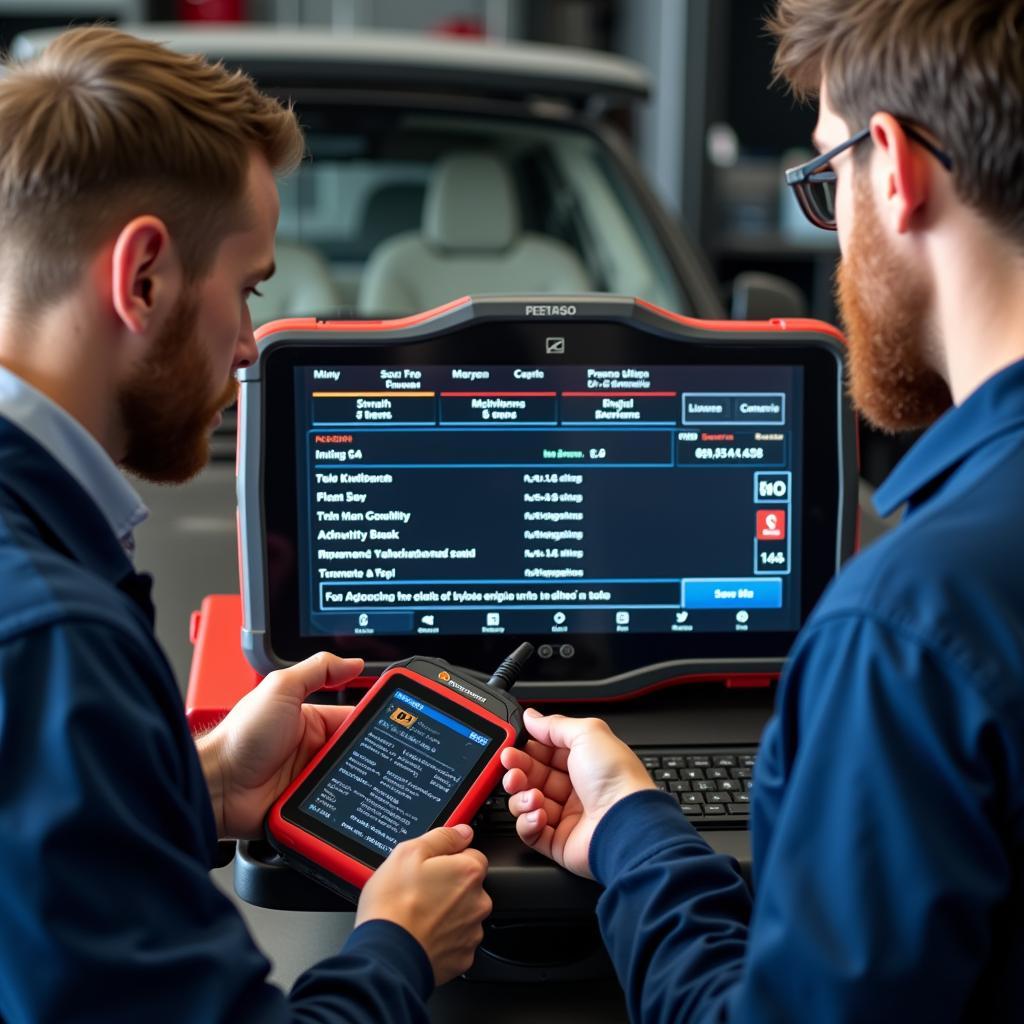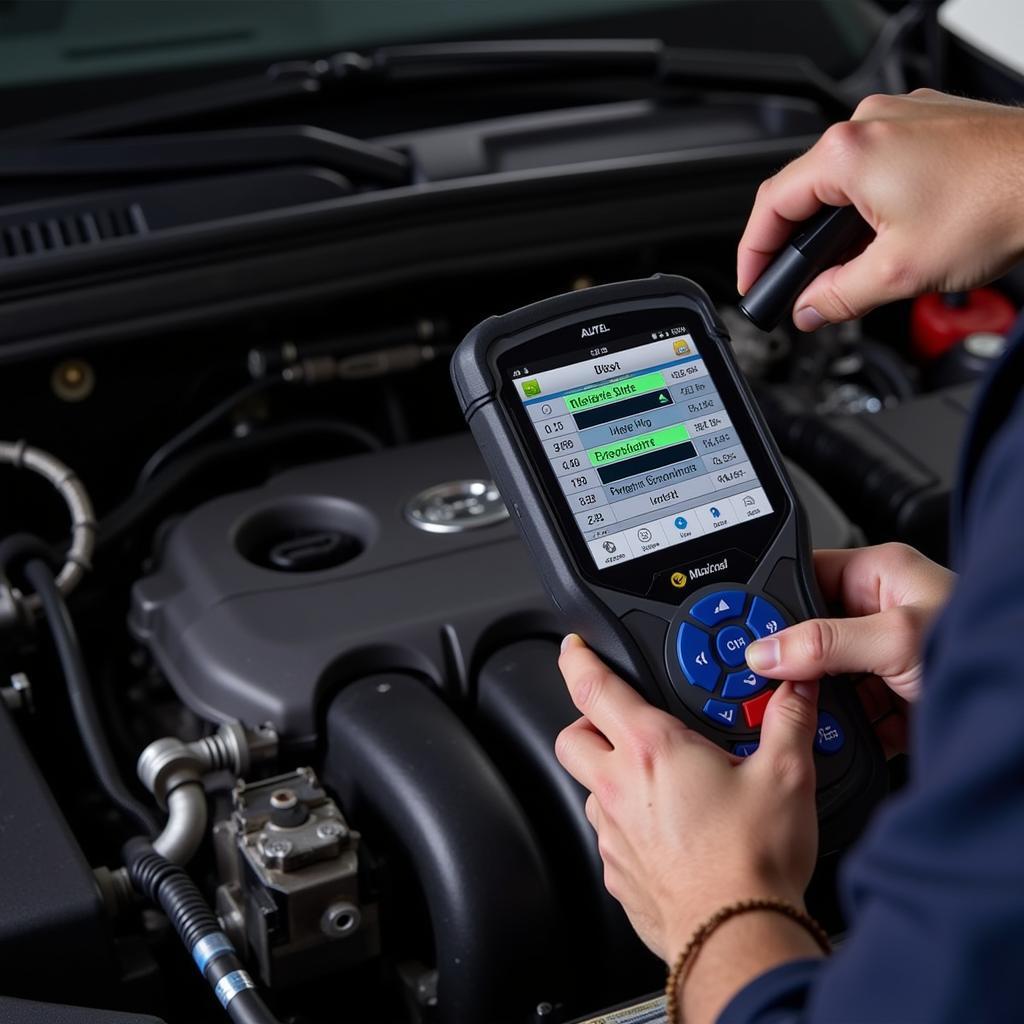Buying a used car can be a nerve-wracking experience. You want to make sure you’re getting a good deal and not inheriting someone else’s problems. A car diagnostic tool can be your best friend in this process, helping you uncover hidden issues before you sign on the dotted line. Using a car diagnostic tool when buying a used car can save you significant money and headaches down the road. Let’s explore how these tools can empower you to make informed decisions.
A good car diagnostic tools can reveal a wealth of information about a vehicle’s history and current condition. From minor glitches to potentially serious mechanical problems, these tools offer valuable insights that can help you negotiate a better price or even walk away from a lemon. But with so many options on the market, how do you choose the right diagnostic tool for your needs?
What to Look for in a Car Diagnostic Tool
When purchasing a car diagnostic tool for evaluating used cars, several key features are essential to consider. These tools can range from simple code readers to more advanced professional-grade scanners.
Essential Features for Used Car Inspections
- Code Reading and Clearing: The most basic function, but crucial. This allows you to read and clear Diagnostic Trouble Codes (DTCs), which indicate potential problems within the vehicle’s systems.
- Live Data Streaming: This feature allows you to view real-time data from various sensors, providing valuable insights into the car’s current performance.
- ABS and Airbag System Support: Checking these critical safety systems is paramount when buying a used car. Ensure your chosen tool can access these modules.
- Smog Check Readiness: Especially important in areas with strict emissions regulations, this feature verifies if the vehicle is ready for a smog test.
- Compatibility: Make sure the tool is compatible with the make, model, and year of the cars you intend to inspect. OBD-II compatibility is standard for most modern vehicles.
For those who regularly inspect vehicles, investing in a professional-grade diagnostic tool might be a wise decision. cr plus professional diagnostic tool is an option worth exploring.
How to Use a Car Diagnostic Tool When Buying a Used Car
Once you have your diagnostic tool, here’s a step-by-step guide to using it effectively:
- Locate the OBD-II Port: This port is typically located under the dashboard on the driver’s side.
- Connect the Tool: Plug the diagnostic tool into the OBD-II port.
- Turn on the Ignition: Turn the car’s ignition to the “on” position (without starting the engine).
- Read the Codes: Follow the tool’s instructions to read any stored DTCs.
- Interpret the Codes: Use a reliable source to understand what each code means. Don’t panic if you see codes – some may be minor or historical.
- Check Live Data: Monitor live data streams to assess the performance of various systems. Look for unusual readings or fluctuations.
- Clear the Codes: After diagnosing the issues, clear the codes and retest to see if any reappear.
If you’re looking for affordable options, exploring used automotive diagnostic tools might be beneficial.
Why is a Car Diagnostic Tool Important When Buying a Used Car?
- Uncover Hidden Problems: A diagnostic tool can reveal issues not apparent during a visual inspection.
- Negotiate a Better Price: Armed with knowledge of potential problems, you can negotiate a fairer price.
- Avoid Costly Repairs: Identifying issues upfront can save you from expensive repairs down the line.
- Peace of Mind: Knowing the car’s true condition provides peace of mind and confidence in your purchase.
Thinking about purchasing a Texa diagnostic tool? Check out texa diagnostic tool ebay for potential options.
Conclusion
Using a car diagnostic tool when buying a used car is a smart investment. It empowers you to make informed decisions, potentially saving you money and headaches down the road. By understanding how to use these tools effectively, you can confidently navigate the used car market and find the perfect vehicle for your needs. Contact ScanToolUS at +1 (641) 206-8880 or visit our office at 1615 S Laramie Ave, Cicero, IL 60804, USA for expert advice and a wide range of car diagnostic tools.
 A mechanic explains the diagnostic report to the customer
A mechanic explains the diagnostic report to the customer
Do you have further questions about what a pre-diagnostic tool means? Refer to our resource on pre diagnostic tool meaning.

